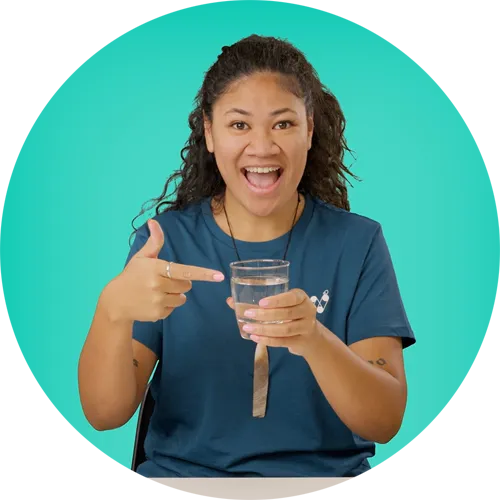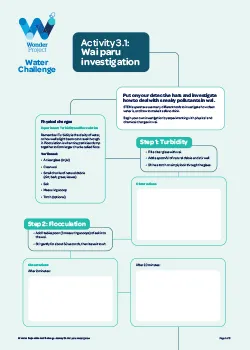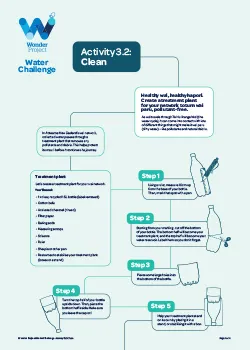

Module 3: Clean
I orea te tuatara ka patu ki waho – A problem is solved by continuing to find solutions.
Lots of things can happen to wai on its journey – so how do we help it stay clean and healthy?
In this module, you’ll discover ngā momo wai (types of water) recognised in mātauranga Māori, including wai paru (dirty water). Then, using the STEM design process, you’ll create a water treatment plant to add to your network.
Ngā momo wai | Water types
When you think of types of wai, what comes to mind?
We’re not just talking about sea water and lake water or still and sparkling. In mātauranga Māori, there are many momo wai (water types), each with different values and uses. Here are some of them:

Only around 3% of wai on Earth is freshwater. Around 80% of this freshwater is contained in icecaps and glaciers. So, there’s even less available to take care of our hapori. That’s why it’s so critical we care for the freshwater on Earth now, so it doesn’t become wai paru (dirty water).
Poster: Ngā momo wai
Print and display this poster on ngā momo wai – types of wai recognised in mātauranga Māori.

Wai paru | dirty water
Wai paru represents any water that’s become dirty through things like pollution – like wai-kino. We can’t always be sure collected wai hasn’t become paru. And if it’s paru, it can’t exactly care for our hapori!
Clean
That leads us to stage two of Aotearoa New Zealand’s wai network, Clean. Let’s check in with Lupesina to learn more.

Activity 3.1: Wai paru investigation
Use your STEM smarts to investigate physical and chemical changes in wai.

STEM design process – create and test
Now you know more about how STEM superstars clean wai, it’s time to follow the STEM design process and create and test a water treatment plant. Your treatment plant should reduce the water’s turbidity and keep its pH neutral. Remember:
- Turbidity: the clarity of water or how well a light beam can travel through it.
- pH: how acidic or basic water is, measured on a scale from 0 (extremely acidic) to 14 (extremely basic).

Reminder!
Start collecting resources to create your pipe prototype including containers that can hold 500ml of wai and boxes/containers to support the structure.
Tools down!
Mīharo. Today you:
- Explored ngā momo wai
- Discovered wai paru
- Learned about the ‘clean’ stage of the journey of wai
- Continued the STEM design process
- Created and improved a water treatment plant